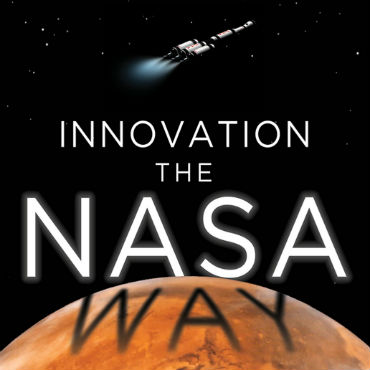'The critical link is giving people ownership'

Author Rod Pyle discusses what other agencies can learn from the culture and systems that have driven NASA's accomplishments.

In "Innovation the NASA Way," author Rod Pyle uses 17 case studies to illustrate the culture and systems that have driven the agency's accomplishments in the past six decades. FCW's Troy K. Schneider spoke with Pyle about the larger lessons in such a unique agency mission.
Every time we write about NASA, people say, "That's fine, but it's not fair. They have rockets and astronauts. How can my agency compete with that?"
If you spend time at NASA field centers, like anywhere else in government, you see a lot being done with very little. It's not like they're getting B-17s' worth of money dropped on them. They're using what will do the job and very little more.
And yeah, they have rocket scientists. There are a lot of very smart people there, but that doesn't mean the resources are any better than they are anywhere else.
One thing you will find at all the field centers is the encouragement to think blue sky. Now back in the Apollo days, when we were grinding up 5 percent of the budget on NASA, you could think blue sky and then do blue sky.
But at half of 1 percent, they think blue sky and then have to pack it in a small budget box. But they're still encouraged to do that, and that's where things like Sky Crane with the Curiosity Mars rover come from.
That team was tasked with getting this mammoth heavy thing to the surface of another planet, and that's really hard to do. They came up with this wacky solution -- the chief engineer said the hardest part was passing the laugh test when he went to see the director. But it was the only way they could figure out to make it work, and it did work -- sensationally.
Also, with most cases, the people who come up with these ideas are then given the mandate to carry it through, so they get to have a certain amount of ownership. This guy who had to pass the laugh test has been the chief engineer on every Mars rover that's gone up.
There's the nature/nurture question: Do you recruit people with passion or do you build a system that impassions people?
As you probably suspect, the answer is yes. They do both. They're very fortunate in that these are people who are working well below the pay level they'd get if they ran off to Google or to one of the big video game companies or something. And that does happen with a fair amount of frequency. But the nice thing about [the Jet Propulsion Laboratory] is you can always go back.
One of the things that came up again and again and again when I was interviewing people from NASA, especially from the go-go years when the programs were really running hot and heavy, is, to paraphrase it: This mission isn't going to fail because of me.
Does the structure matter or is part of your thesis that you can build all the structure you want but you still need this special sauce?
There is truth in both sides of that. The structure does matter. There are a lot of really good books out there that detail that. And NASA uses a lot of those books for guidance; there's a lot of leadership training.
Those things are really relevant and good. But I think the critical link is giving people ownership and saying, "OK, I want you to invest yourself in this. I'll back you whatever the outcome," because innovation is a risky business. Unless you do that, I don't think you're going to have innovation.
NEXT STORY: SEC trying out the business information officer


